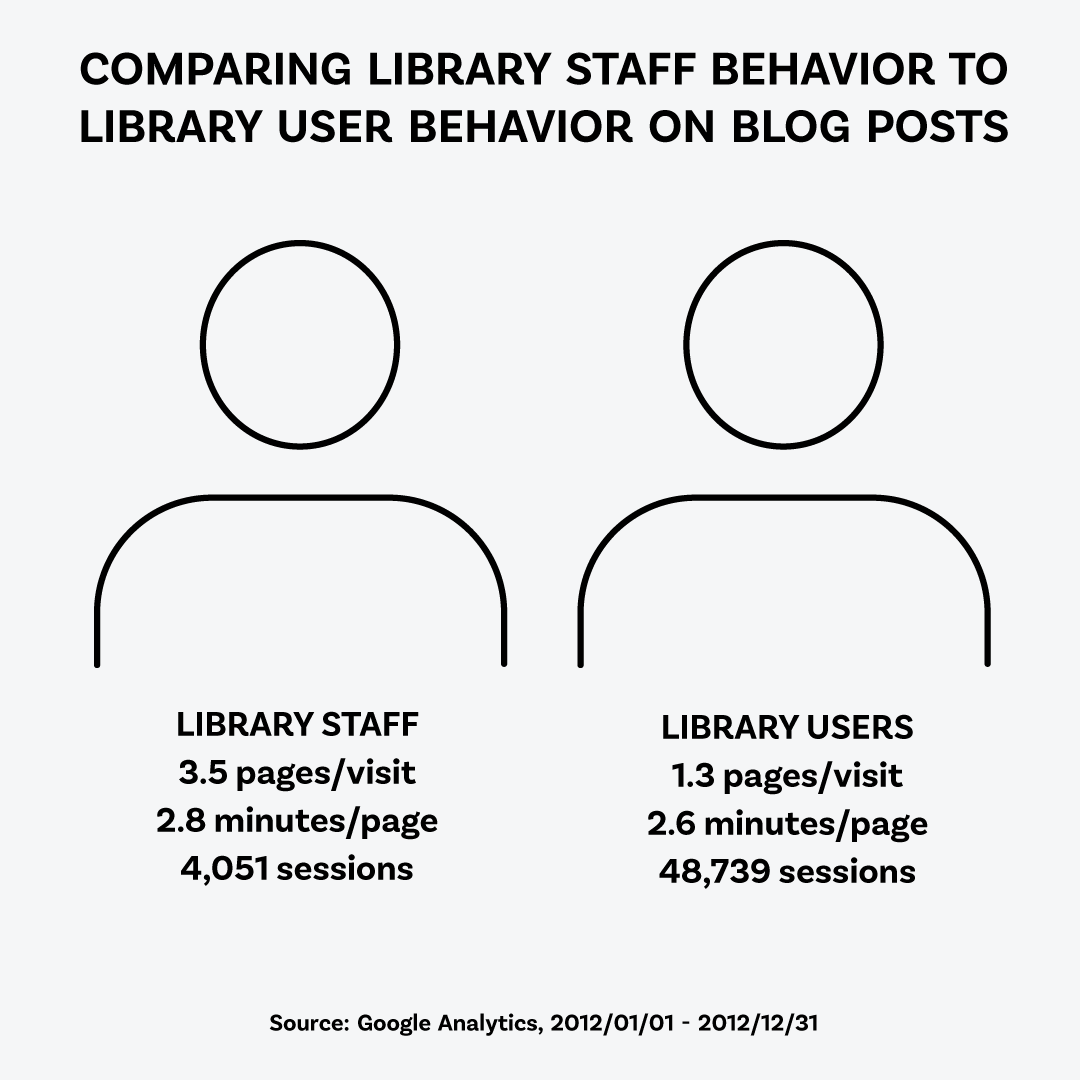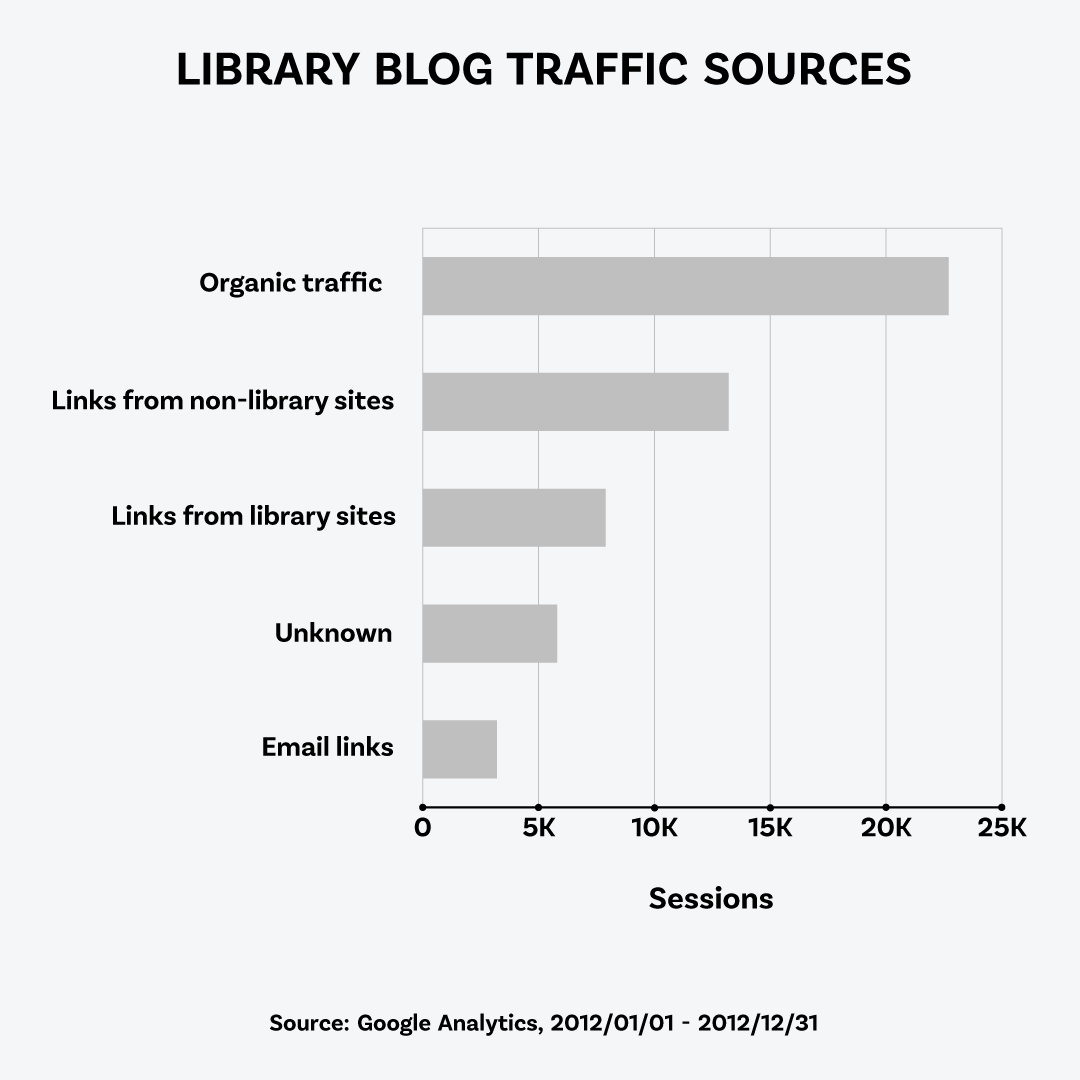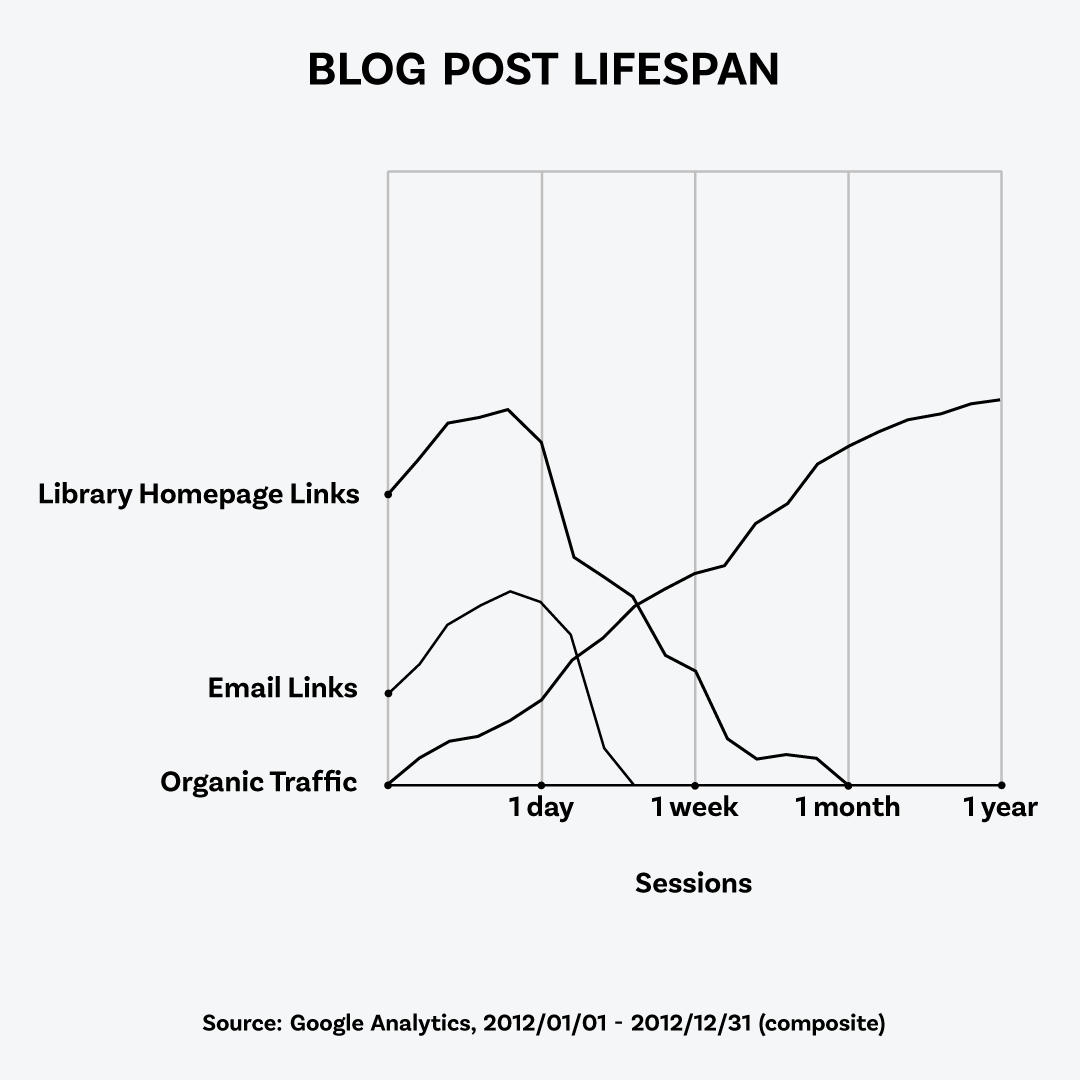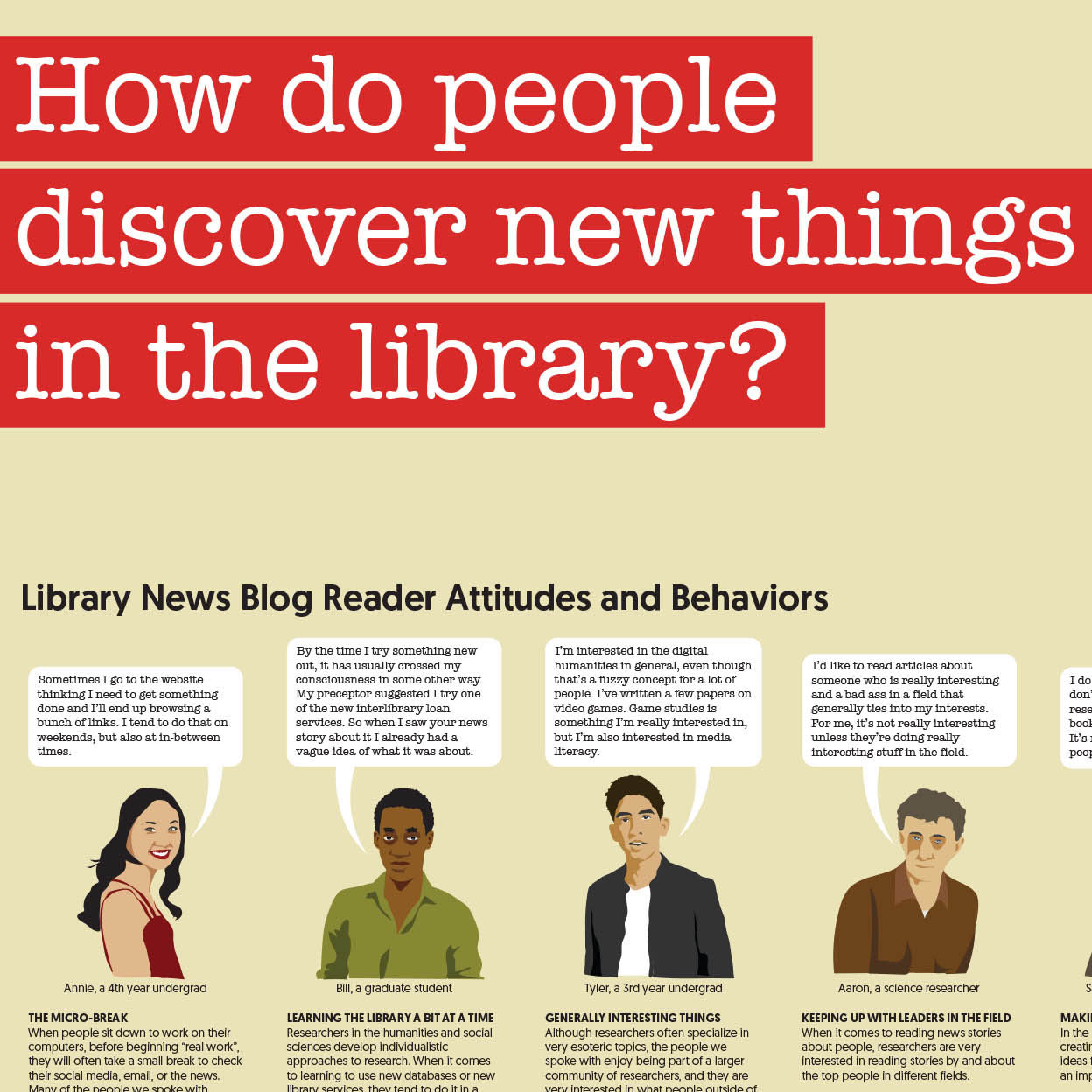Building Context Around Library News
Contents
Introduction
Research library patrons are often in a hurry as they search for whatever they’re looking for. They often use popular tools like JSTOR, LexisNexis or PubMed. However, libraries are constantly investing in new services, hosting events, and providing training for a wide range of products, and libraries want to encourage patrons to use library services as fully as they can. Patrons are also sometimes not conscious of exactly what the library provides for them, even if they benefit from it. As the library advocates for itself on campus, this conscious awareness can be helpful.
Many library websites include a section that displays “library news”—sometimes these are links that point to external media sites that mention the library, but in other cases they link to internal pages authored using a content management system. These blog entries are a type of public relations post—they are usually timely and include a date of publication, and possibly a byline, along with a story about a new product, service or event.
This project aimed to help news post authors promote the library by giving the contextual information about the attitudes, behaviors, and activities of the audience for these stories.
Process
Research
- Interviews
- Web Analytics
- Survey
Analysis
- Affinity Mapping
Synthesis
- Attitudes and Behaviors
Delivery
- Report
- Workshop
How does patron behavior differ from library staff behavior online?
Library staff, students, faculty, university staff and members of the community all read library news posts. However, staff behavior differs from patron behavior: staff tend to spend more time reading the news in a given session than others do, and they tend to visit more news posts at a time than patrons do.

Where do news blog visitors come from?

Organic traffic and links from non-library sites provide most site traffic. Often, people who arrive on library blog posts don’t realize how they got there. When they find themselves on a blog post, they aren’t doing conscious, directed searching—instead they’re doing free-form web surfing.
What is the lifespan of a news article?
When a new library blog post appears in social media, it receives a bump in traffic that lasts for a day or two. Email traffic is similar. Adding a thumbnail image and a link to a news post on the library homepage will produce a bump in traffic for several weeks. By way of comparison, search engine traffic often builds slowly, but for popular stories it can continue to provide traffic for months or even years.

Interviews
We recruited students, staff and community members who read the library news by adding a link to a webform on library news pages. We conducted eight one-hour one-on-one interviews total. Once interviews were complete, we transcribed and coded each interview text.
Affinity mapping
After transcribing our interviews and developing a set of open codes to label the types of things participants were saying, my partner and I wrote out all of our codes on post-It notes for an affinity mapping session. Working together we rearranged the codes into a set of groupings that summarized the contents of our interviews to both of us.
Reader attitudes and behaviors
Once we had finished developing our groupings during affinity mapping, we started to think about ways to name and describe them. This process is more than analytic since we were trying to think of ways to communicate to our audience of library blog post authors specifically. We wanted to work with their existing mental models, but nudge them towards thinking of the library news in a way that we felt was more accurate: rather than thinking of it primarily as a place where users could go to learn about the things the library has to offer (an information architecture problem) we wanted them to think of it as a place where they could promote library services to patrons, even when they weren’t purposefully looking for them (a communications problem.)
This summary of attitudes and behaviors becomes an important part of how to proceed with the project. These mini narratives about user behavior become a way to understand what it is that we’re trying to build, and why it’s important. As principles, they help to provide structure for decisions about design, development, and content.
The Micro-Break
“Sometimes I go to the website thinking I need to get something done and I’ll end up browsing a bunch of links. I tend to do that on weekends, but also at in-between times.”
When people sit down to work on their computers, before beginning “real work”, they will often take a small break to check their social media, email, or the news. Many of the people we spoke with reserved some time to “dork around online” at certain times of the day.
For the people who come to the library’s homepage, library news stories are often an excuse to take a short break online.
Learning the Library a Bit at a Time
“By the time I try something new out, it has usually crossed my consciousness in some other way. My preceptor suggested I try one of the new interlibrary loan services. So when I saw your news story about it I already had a vague idea of what it was about.”
Researchers in the humanities and social sciences develop individualistic approaches to research. When it comes to learning to use new databases or new library services, they tend to do it in a very ad-hoc way.
When they do try something new, they build on their existing knowledge of the way the research process and how the library works.
Generally Interesting Things
“I’m interested in the digital humanities in general, even though that’s a fuzzy concept for a lot of people. I’ve written a few papers on video games. Game studies is something I’m really interested in, but I’m also interested in media literacy.”
Although researchers often specialize in very esoteric topics, the people we spoke with enjoy being part of a larger community of researchers, and they are very interested in what people outside of their areas of specialization are up to.
Students and beginning researchers often cultivate these general interests and pick a specialization from them.
Keeping up with Leaders in the Field
“I’d like to read articles about someone who is really interesting and a bad ass in a field that generally ties to my interests. For me, it’s not really interesting unless they’re doing really interesting stuff in the field.”
When it comes to reading news stories about people, researchers are very interested in reading stories by and about the top people in different fields.
Making New Connections
“I do philosophy of religion, but I don’t really consider what I do research in any sense. I work with books and texts but that’s really it. It’s more like playing with other people’s concepts.”
In the humanities and social sciences, creating new associations and exploring ideas from different perspectives is often an important part of the work.
Although someone like a science researcher will often read news articles about the humanities, certain types of research projects have built-in incentives to explore neighboring topics when they come up.
What Makes Libraries Unique?
“There’s something radically political about making access to information universal, in spite of companies and in spite of government. I see something radical about being part of libraries.”
People think of libraries as a kind of neutral zone: a kind of place that is ideologically very different from private corporations, from the media, or even from the university departments the library serves.
Team
I worked with Isabel Gonzalez-Smith for this project. Leo Lo joined us to develop and run our persuasive design workshop. Thanks very much for collaborating, Isabel and Leo.

